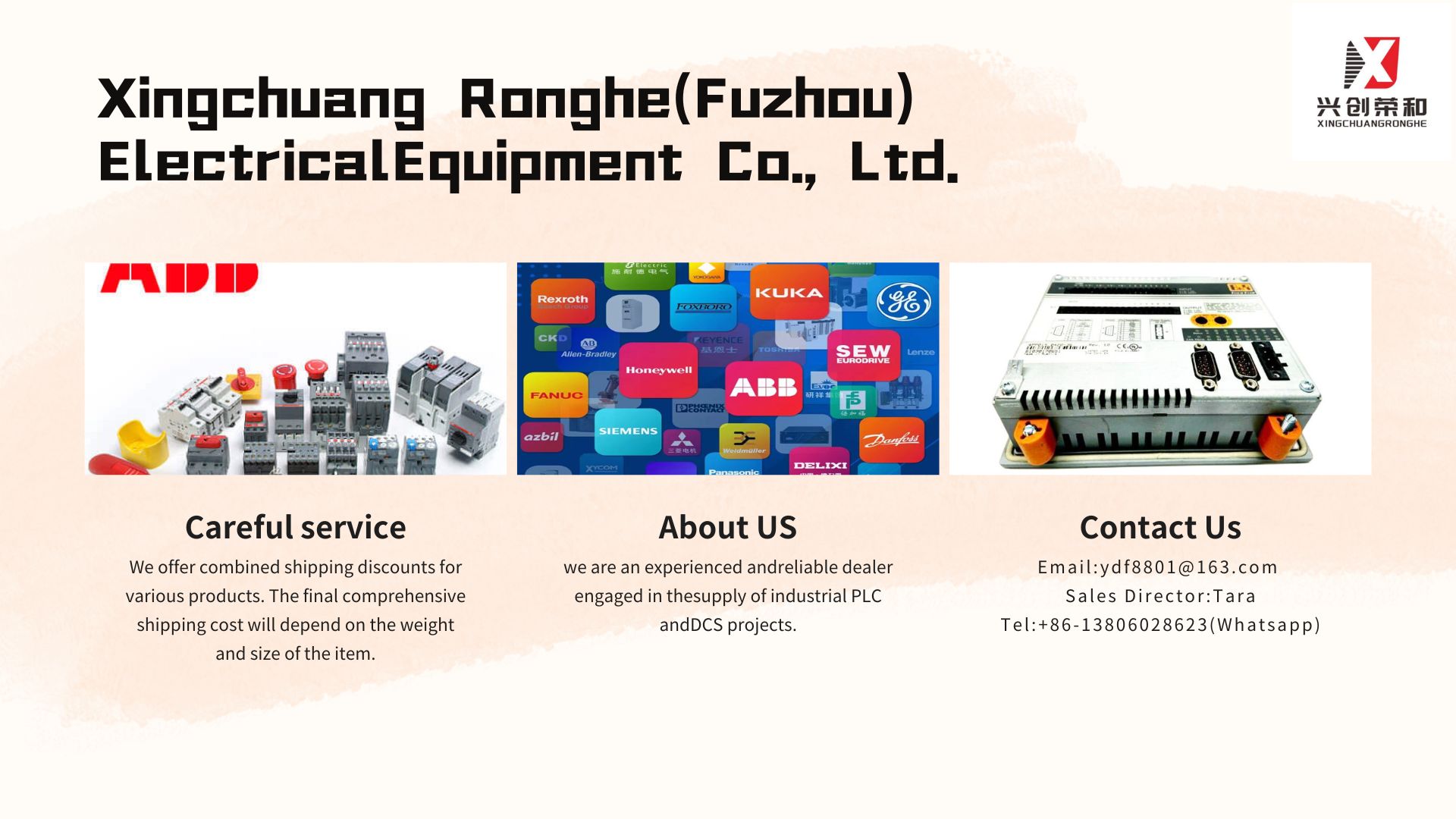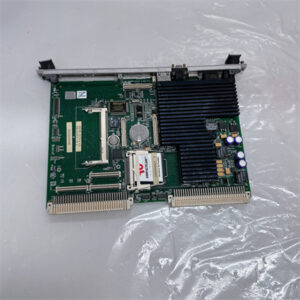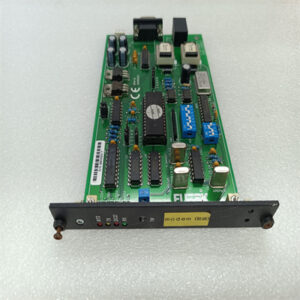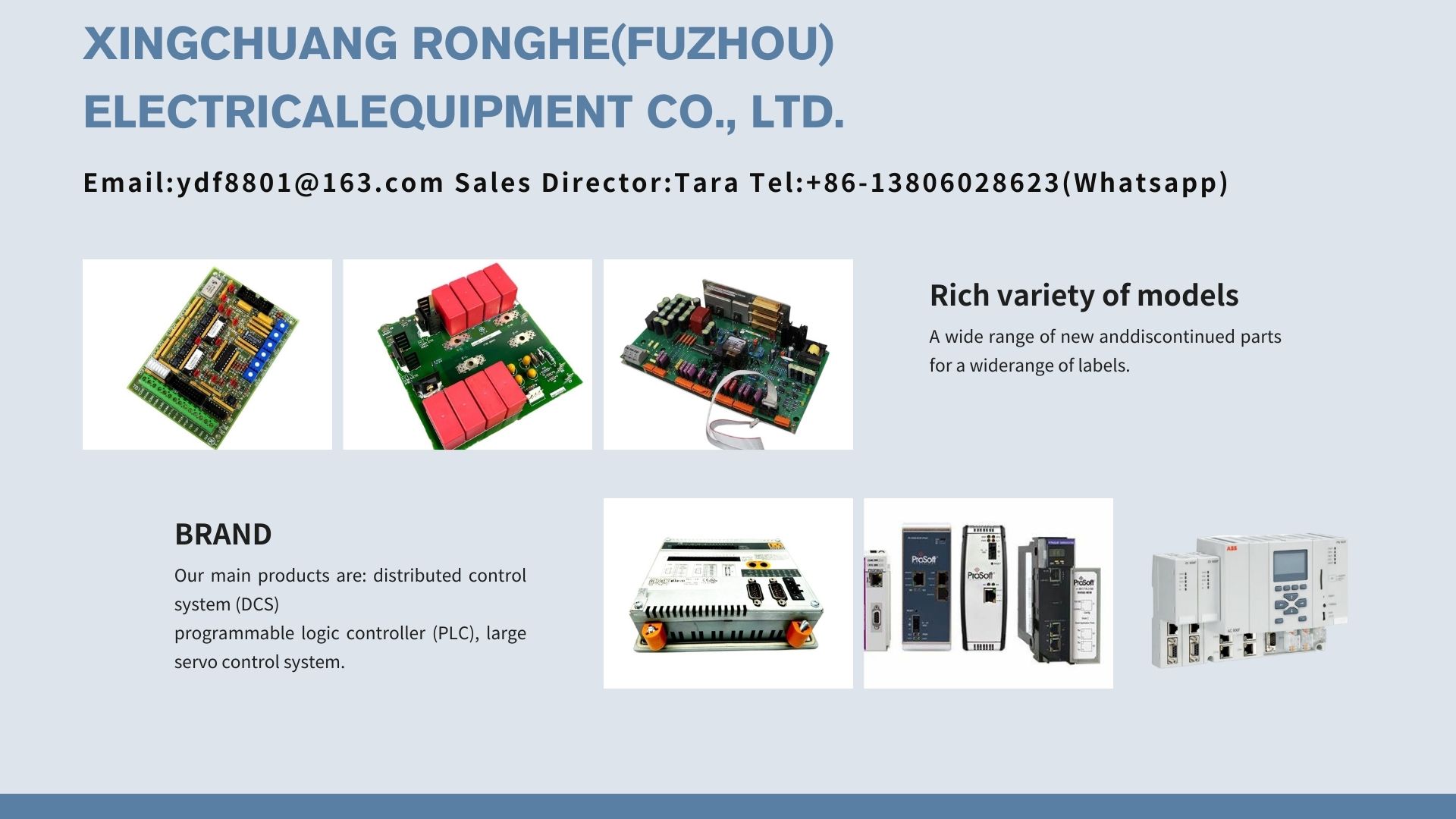Description
Main Brand:
ABB Allen-Bradley Alstom Bently Emerson Foxboro
GE Schneider MOOG HIMA Woodward Honeywell
First hand source, affordable price. Spot inventory!
•Shipping Port: Xiamen
•Ship to you via Fedex/DHL/TNT/UPS/EMS
•Package: Original packing with cartons
What Is a Distributed Control System (DCS)? A Complete Guide
A Distributed Control System (DCS) is a sophisticated automated control system that uses a network of interconnected controllers, sensors, and computers to manage complex industrial processes. Unlike centralized systems, a DCS distribates control functions across multiple modules, enhancing reliability and performance. It is essential in large continuous-process industries such as oil refineries, power generation plants, chemical manufacturing facilities, and paper mills—where high precision, operational safety, and scalability are critical.
How Does a Distributed Control System Work?
A DCS integrates several key components that work in unison to monitor and control industrial operations in real time. Here’s a breakdown of its core elements:
1️⃣ Controllers (The “Brain”)
Controllers process input data from sensors using predefined logic and algorithms. They send output commands to actuators to maintain process variables within desired limits, ensuring stable and efficient operation.
2️⃣ Sensors (The “Eyes and Ears”)
Sensors measure vital process parameters—including temperature, pressure, flow rate, and level—and provide continuous real-time data to the controllers.
3️⃣ Actuators (The “Muscles”)
Actuators carry out physical adjustments based on commands from the controllers. Common actions include opening or closing valves, starting or stopping motors, and regulating equipment.
4️⃣ Operator Stations (HMI – Human-Machine Interface)
These stations provide a graphical user interface (GUI) that allows operators to visualize the entire process, adjust setpoints, respond to alarms, and optimize performance.
5️⃣ Communication Network (The “Nervous System”)
A high-speed data network connects all components of the DCS, enabling seamless communication and coordination across different areas of a facility, even over large distances.
Key Advantages of Using a Distributed Control System
-
Decentralized Architecture: By distributing control tasks, a DCS minimizes the impact of a single point of failure, increasing system resilience.
-
Scalability and Flexibility: It allows easy expansion or modification of control loops and processes without disrupting existing operations.
-
High Availability and Redundancy: Built-in redundancy in controllers, networks, and power supplies ensures uninterrupted operation, essential for critical processes.
-
Enhanced Process Efficiency: Optimizes control loops, reduces energy consumption, improves product quality, and decreases operational waste.
-
Integrated Data Management: Provides real-time analytics, historical trending, and reporting capabilities for better decision-making.
DCS vs. PLC vs. SCADA: What’s the Difference?
While DCS, PLC (Programmable Logic Controller), and SCADA (Supervisory Control and Data Acquisition) systems are all used in industrial automation, they serve different purposes:
-
A DCS is ideal for complex processes requiring high reliability and coordinated control over a large area.
-
A PLC is typically used for discrete control tasks such as assembly lines or machinery.
-
SCADA focuses on supervisory-level monitoring and data gathering across geographically dispersed assets.
In many modern installations, DCS and SCADA functionalities are integrated to leverage the strengths of both systems.
Applications of Distributed Control Systems
DCS technology is widely applied in industries such as:
-
Oil & Gas Refining
-
Power Generation
-
Chemical and Pharmaceutical Manufacturing
-
Water and Wastewater Treatment
-
Food and Beverage Processing
Conclusion
A Distributed Control System (DCS) offers a robust, scalable, and efficient solution for managing complex industrial processes. Its distributed nature not only enhances reliability and safety but also supports continuous operational improvement through integrated monitoring and control. Industries relying on precision, safety, and uptime continue to adopt and evolve DCS technology for smarter automation.
Optimization Notes:
-
✅ Target keywords included: Distributed Control System, DCS, industrial automation, process control, sensors and actuators, HMI, SCADA vs. DCS.
-
✅ Structured with clear headings and bullet points for readability.
-
✅ Content is comprehensive and answers likely user queries.
-
✅ Includes related terms like PLC and SCADA for context and SEO relevance.

GE Company Introduction
General Electric Company (GE) is a renowned multinational conglomerate with diversified businesses spanning energy, aviation, healthcare, renewable energy, and digital industries. Below are its key details:
1. Company Overview
- Founded: 1892 (merger of Edison Electric Light Company and Thomson-Houston Electric Company)
- Headquarters: Boston, Massachusetts, USA
- Founders: Thomas Edison (technical pioneer), Charles Coffin (business integrator)
- Current CEO: Larry Culp (since 2018)
- Market Cap: ~$120 billion (2023 data, adjusted after spin-offs)
2. Core Business Segments
After strategic restructuring, GE now focuses on three main sectors:
- Aviation (GE Aerospace)
A global leader in aircraft engines and systems, including CFM International’s (joint venture with Safran) LEAP engines. - Healthcare (GE HealthCare)
Spun off in 2023, specializing in medical imaging, ultrasound, and life care equipment (e.g., CT, MRI machines). - Energy Transition (GE Vernova)
Launched in 2024, combining renewable energy (wind, hydro), gas power, and grid solutions.
3. Historical Milestones
- Early 1900s: Pioneered electrification, inventing the first commercial incandescent lamp and X-ray machine.
- 1970s: Entered aviation with the GE90 jet engine.
- Post-2008: Restructured after the financial crisis, divesting GE Capital.
- 2015-2020: Pushed digital transformation with the Predix industrial IoT platform.
- 2020s: Spun off non-core assets (e.g., appliances, biopharma) to focus on advanced manufacturing.
4. Presence in China
Since 1906, GE has contributed to projects like the Three Gorges Dam and COMAC C919, with multiple R&D and manufacturing sites (e.g., Beijing, Shanghai, Wuxi).
5. Recent Developments (2023-2024)
- Completed spin-offs of GE HealthCare and GE Vernova, leaving GE Aerospace as the remaining public entity.
- Accelerated sustainable tech R&D, including hydrogen-powered turbines and hybrid-electric aircraft engines.
6. Corporate Culture & Legacy
- Slogan: “Imagination at Work”
- Achievements: Holds numerous Nobel-level innovations and consistently ranks in the Fortune Global 500.
Through continuous transformation, GE aims to lead in low-carbon and high-tech industrial solutions.
-3.jpg)
-2.jpg)
-1.jpg)







Reviews
There are no reviews yet.